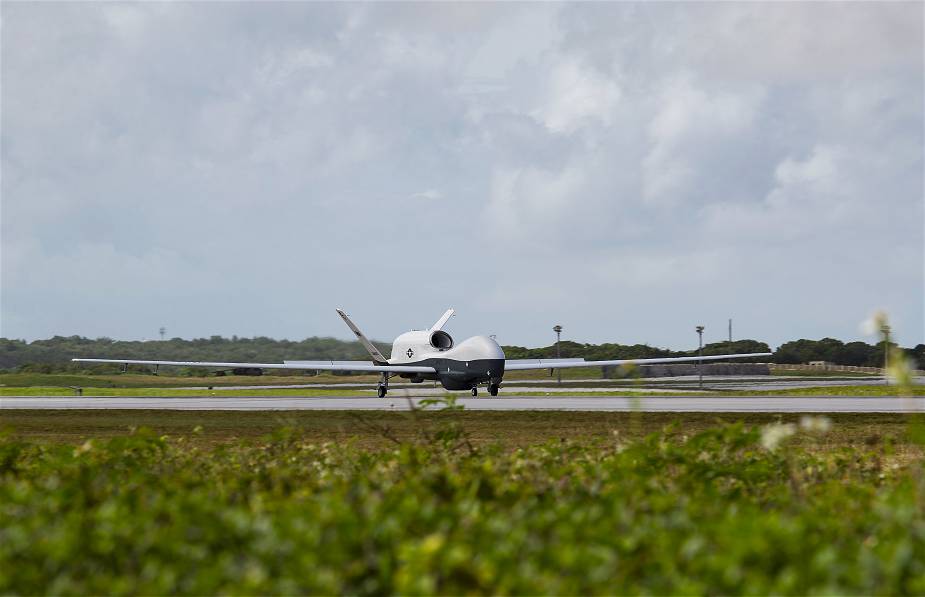Breaking news
Australia approves sustainment funding for the fleet of MQ-4C Triton naval unmanned aircraft.
According to a statement released by the Australian Department of Defence on December 30, 2020, the Government of Australia has also approved sustainment funding for the currently approved fleet of three MQ-4C Triton naval unmanned aircraft.
Follow Navy Recognition on Google News at this link
 An MQ-4C Triton unmanned aircraft system (UAS) taxis after landing at Andersen Air Force Base. (Picture source U.S. Navy)
An MQ-4C Triton unmanned aircraft system (UAS) taxis after landing at Andersen Air Force Base. (Picture source U.S. Navy)
In June 2018, Australia has announced an investment of $1.4 billion for the acquisition of six MQ-4C Triton remotely piloted aircraft through a cooperative program with the United States Navy. The MQ-4C will be used by the Australian Navy to complement the surveillance role of the P-8A Poseidon aircraft through sustained operations at long ranges as well as being able to undertake a range of intelligence, surveillance, and reconnaissance tasks.
Together these aircraft will significantly enhance Australian Navy anti-submarine warfare and maritime strike capability, as well as search and rescue capability.
On June 19, 2020, Northrop Grumman Corporation has announced the Australian government’s decision to provide funding for an additional three of their planned six MQ-4C Tritons and associated ground mission control stations.
In December 2020, Northrop Grumman Corporation has completed Phase 1A - initial development - of the MQ-4C Triton Network Integration Test Environment (NITE), located at Royal Australian Air Force Base Edinburgh in South Australia.
Phase 1A completion means CIOG can begin developing the Triton network design for Australia and to test basic Triton network configuration settings. Northrop Grumman Australia will develop NITE in three phases, allowing CIOG to progress from basic continuity testing between distributed environments to an advanced integrated capability development environment.
The MQ-4C Triton is an American high-altitude long-endurance unmanned aerial vehicle (UAV) under development by Northrop Grumman for the United States Navy as a surveillance aircraft.
The MQ-4C Triton air vehicle is based upon the United States Air Force (USAF) RQ-4B Global Hawk, while its sensors are based upon components of already fielded in the U.S. DoD (Department of Defense) inventory. Along with the P-8A manned aircraft, the MQ-4C Triton is integral to the Navy's Maritime Patrol and Reconnaissance Force (MPRF) Family of Systems (FoS).
The fuselage of the MQ-4C Triton is an aluminum semi-monocoque construction while the V-tail, engine nacelle, and aft fuselage are made of composite materials. It has a length of 14.5 m, a height of 4.7 m, and a wingspan of 39.9 m. It has an internal payload of 1,452 kg maximum and an external payload of 1,089 kg.
The MQ-4C Triton can fly at a maximum altitude of 18,300m (60,000ft). It has a gross take-off weight of 14,628 kg. Its maximum unrefueled range is 18,427 km (9,950 nm) and has a flight endurance of 30 hours. It can reach a maximum speed of 575 km (357 mph).


























